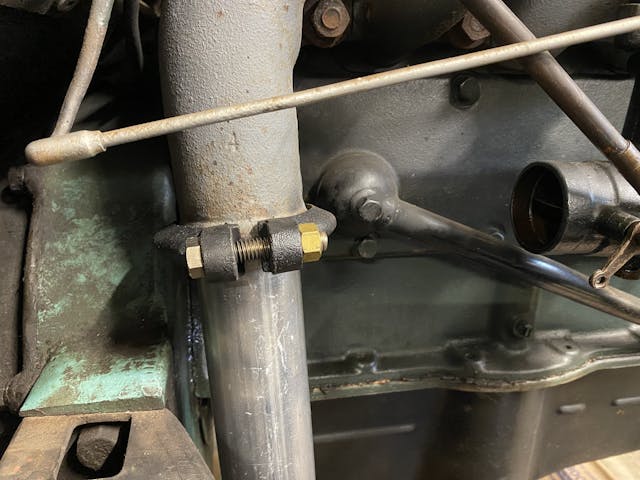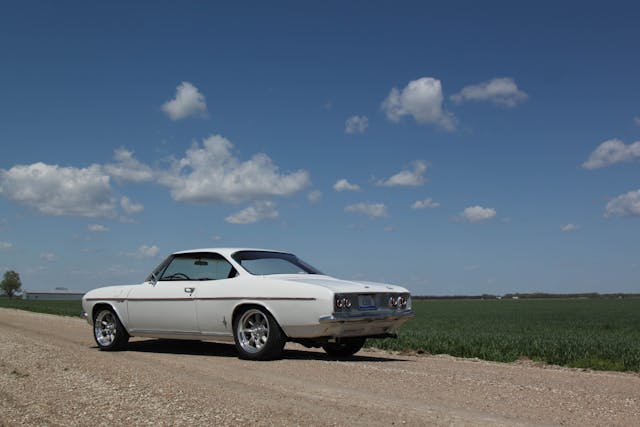Media | Articles
Subtle modifications are the best modifications
One of the best parts of the automotive world is that, with very few exceptions, no one gets to tell you what you can or cannot do to your car. I know those on the left coast will scream, “but C.A.R.B!” and they are right. After you perform a certain amount of modifications, you can’t drive your car on the road (legally, at least). However, you can still make changes and enjoy the car off the street, whether that’s on a track, on a trail, or on display at a show. We have the freedom to build our automobiles into extensions of our own personalities, and anything goes. That being said, I hold subtle modifications in higher regard than shouty, over-the-top stuff.
Hear me out here. Custom cars are awesome. I have done extensive work to make my Corvair decidedly un-factory, but it’s the modifications to my Model A Ford I’ve been enjoying more recently. Big wheels, fancy paint, or high-performance bits aren’t my concerns. Grease fittings and gasket materials occupy my mind instead, and I’m here to argue that these deviations from the factory spec are the perfect modifications.
These unglamorous changes can pass under the radar of the casual observer, but they can drastically simplify an enthusiast’s life by making a task that was once a monthly, weekly, or even daily burden into an annual checkup—and sometimes, by eliminating it completely.

For instance, upgrading a Class 1 bearing to a Class 3 bearing. Case in point? The pivot points of my Model A brake components. A Class 1 bearing is colloquially known as a bushing and requires grease or some other form of lubrication. Proper maintenance of these bushings means you’ll need to roll around under your car pumping grease into a seemingly endless number of grease fittings—a messy task you can avoid with a simple upgrade. Pop out that standard bronze bushing and install a Class 3 bearing—which is self-lubricating, either via sintered metal or Oilite, which holds and releases oil based on heat and pressure—and your life just got a lot simpler … and cleaner.
Much of the tech we “upgrade to” today was available in-period but didn’t make sense to use in production models for one reason or another. For instance, Oilite was developed by Chrysler in 1930. However, the tooling and material cost probably made it too expensive for budget-minded production cars. Today, we enthusiasts inherit decades of advancement that’s made materials and processes ever more affordable and streamlined. An Oilite bearing that, if used in production Model As, would have required Ford to hike prices, is now $1 from McMaster Carr. It can be on my doorstep in days, ready to press into place where it will function perfectly for decades with little to no maintenance.
Marketplace
Buy and sell classics with confidence
Same with electronic ignitions. Replacing the point-style ignition in your classic will likely make it easier to start and result in a more stable ignition curve. Stabbing a full electronic distributor into my Corvair cost only a few hundred dollars and made the car start and run markedly smoother. The electronic unit is also noticeably different than a stock dizzy, so if you prefer an even subtler upgrade, there are middle-ground solutions like the Pertronix points replacement kits that hide under a stock cap and wires.

This is the part where I acknowledge those of you who are screaming at the screen about how these upgrades ruin the experience of a vintage car. On that we agree. If you want to spend $100,000 stuffing a 5.0 Coyote and Bluetooth adapters into a ’60s muscle car body, more power to you—but don’t try to tell me it’s an old car when the only thing vintage is the VIN. If you’re in the camp of enthusiasts who prefer the authentic vintage experience, however, don’t begrudge your fellow gearheads a handful of small changes and upgrades that allow them to enjoy their cars with less effort.
None of my cars will be concours winners. I own them to enjoy driving them, and if I can limit the frustration of keeping them on the road, you better bet I will. I still want my old cars to have the character of old cars, so that means my personal line in the sand is drawn somewhere around bolt-on fuel injection.
Everyone’s line will lie in a different place, and none are wrong. That the best part of our car hobby; we all get to play with our toys how we see fit. Personally, I hope you don’t deny yourself a modification that makes your car more fun to drive and easier to service, especially if the upgraded part is nearly indistinguishable from the original parts and pieces. Cars are meant to be driven, and using our modern materials to keep our rides on the road is a great thing.




